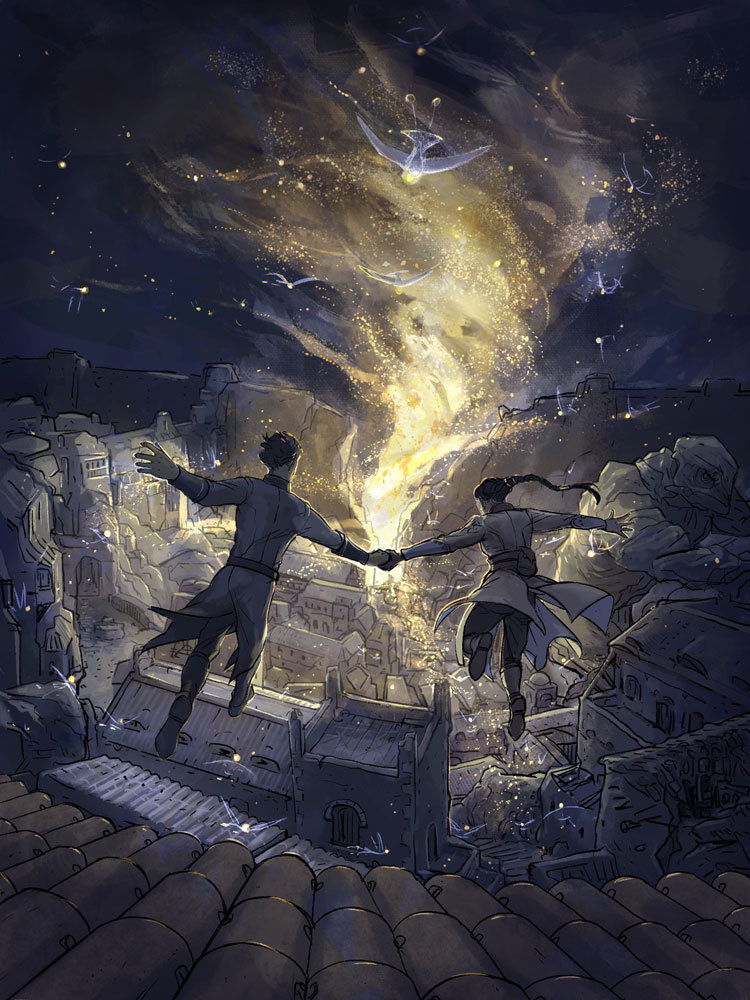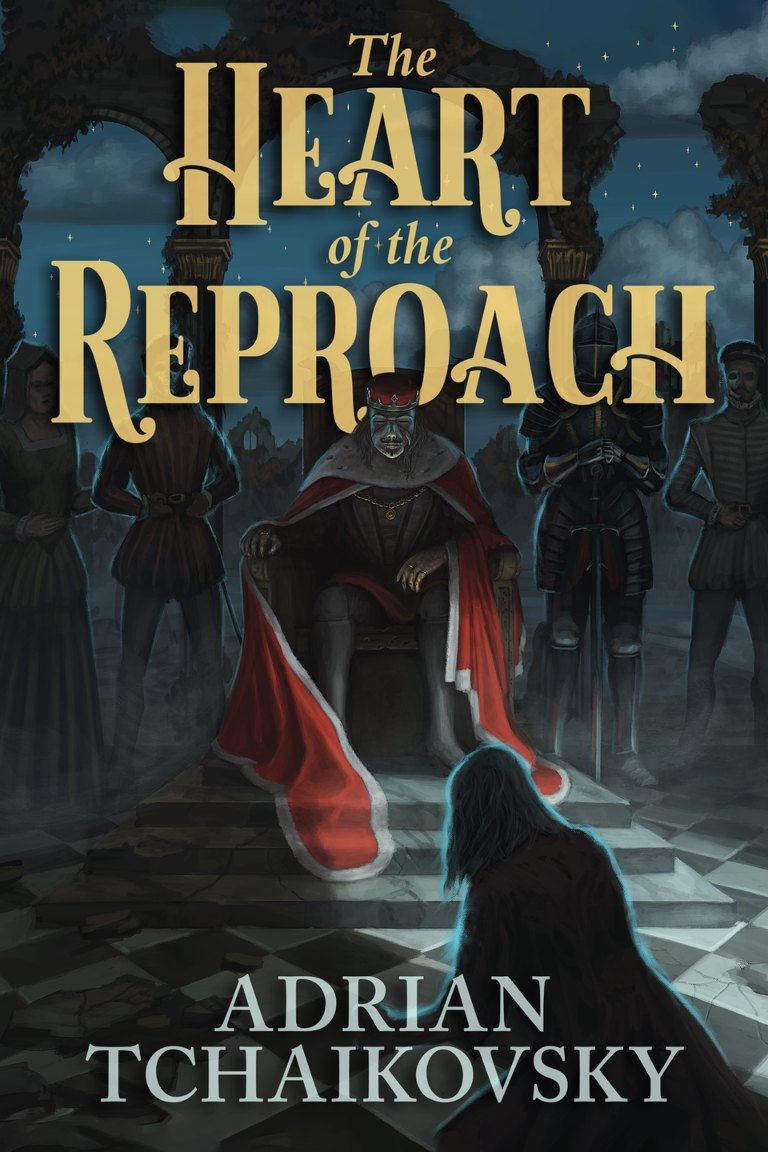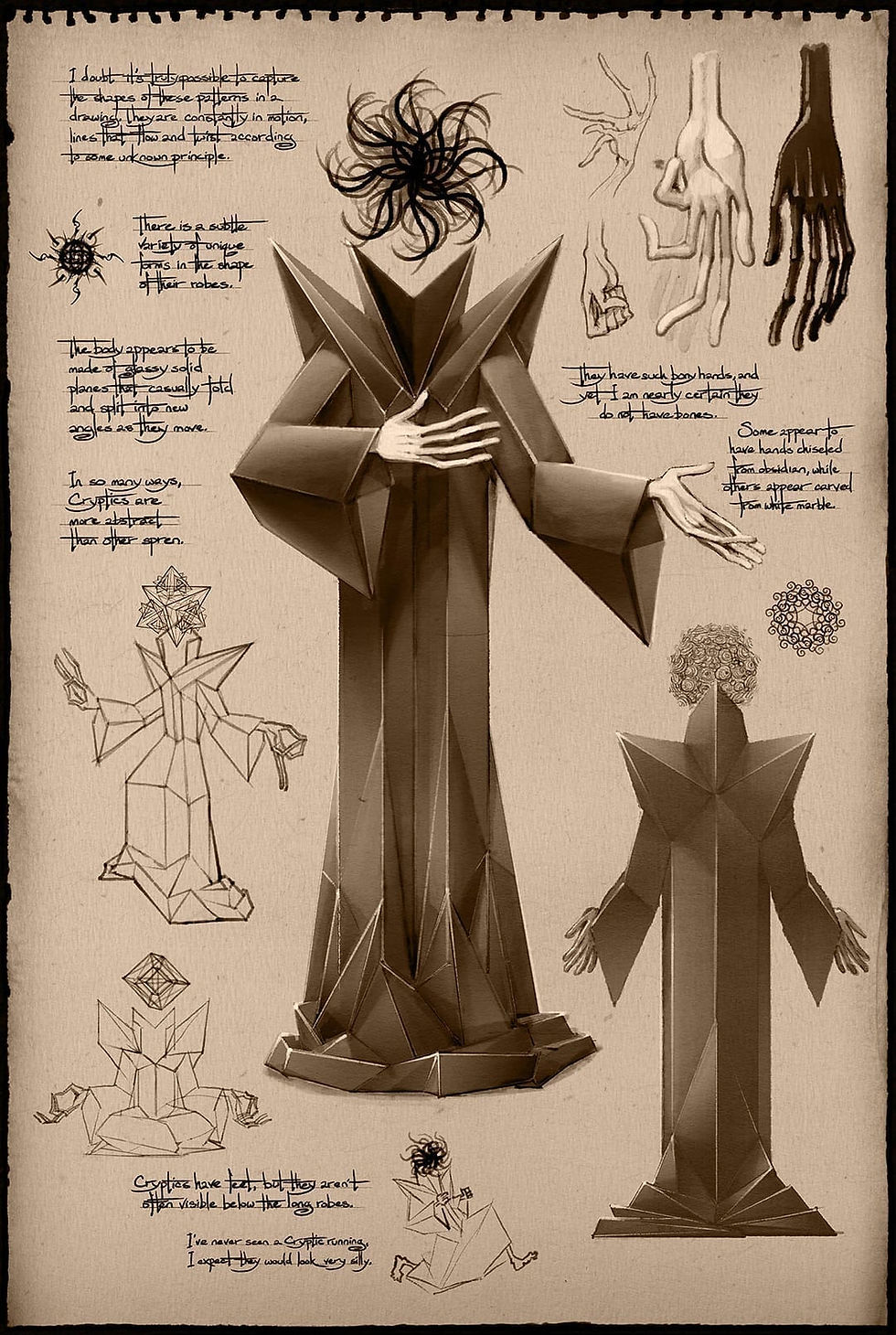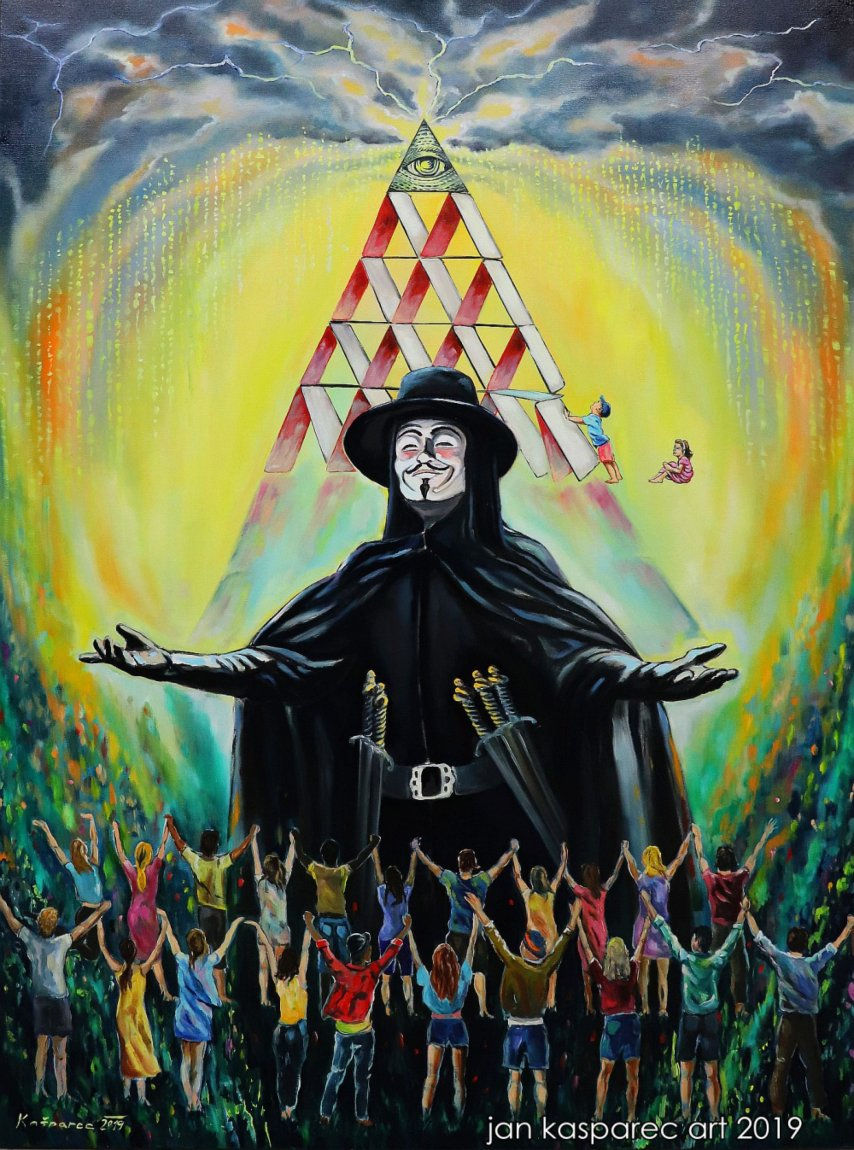The Tyrant Philosophers: Worldbuilding & Stormlight Parallels
- zachlaengert
- Aug 5
- 7 min read
My favourite Adrian Tchaikovsky series to date, with a dash of Brandon Sanderson
A Prolific Writer
Fans of speculative fiction make a lot of jokes about Brandon Sanderson's ability to turn out his novels at a consistent, rapid pace – especially considering the community's frustration with the slower pace of other popular authors. Sanderson has published roughly 25 works since 2020, including a fair number of novellas, short stories and co-authored books.
Adrian Tchaikovsky (traditionally spelled Czajkowski) has actually published a similar number in the same time frame, and for my money his work might be more consistently enjoyable. (Or maybe I'm still just a little irked by The Frugal Wizard's Handbook.) Alien Clay and Cage of Souls are great standalone novels; Firewalkers, Ogres and Walking to Aldebaran fascinating novellas; I bounced off of The Final Architecture a little but still have the utmost respect for its brilliant worldbuilding.
I've previously written about Tchaikovsky's incredible Children of Time series in relation to ideas of transhumanism and about how his novella Elder Race plays with Clarke's Third Law. Last week I introduced his The Tyrant Philosophers series and discussed how its first entry explores ideas of oppression and revolution.
Today I want to share some of my favourite examples of worldbuilding in this series, and to point out parallels to ideas in other works where I've found them. Spoilers ahead for City of Last Chances, House of Open Wounds and Days of Shattered Faith – and the first four books of The Stormlight Archive.

Everything Stormlight
Okay, so maybe there's another reason I brought up Sanderson in the intro. As you might be able to tell by how often I bring it up, Sanderson's Stormlight Archive takes up a lot of space in my mind. Perhaps that's why I can't stop seeing parallels between that series and The Tyrant Philosophers... or perhaps Tchaikovsky read the series and found it as fascinating as I did. (The bonus is that while The Tyrant Philosophers has zero fan art as yet, Stormlight has plenty to share!)
Points of Egress
The Anchorwood & Waygrove are easily among the most intriguing mysteries Tchaikovsky has established. Copses of trees which occasionally open up to a forest between worlds (though no pools here as far as we know), maintained by masked hivemind cultists and home to utterly alien monsters.
These groves – two of an estimated five or six in the series' world – represent the possibility of freedom and escape from persecution for oppressed people in the cities of Ilmar and Alkhalend, in the first and third books respectively. Of course, they also represent the possibility of unlimited places to colonize for the titular Tyrant Philosophers of Pallesand, and it's no coincidence that the series opens with one such attempt going horribly wrong.
The world of Stormlight (and the Cosmere as a whole) has Perpendicularities, which likewise allow for people to travel between worlds – and in the case of the Oathgates, across a single world like the groves have allowed. While Sanderson hasn’t gone as much into these places as symbols of hope and freedom, they are always important locations where stories tend to converge.

Otherworldly Warrior & Weapon
Zahel in Stormlight is a man from another world (and another book), who has travelled through a Perpendicularity and now searches for a great and terrible weapon (Nightblood) that he helped to create and vowed to safeguard. In the meantime, he makes a life for himself as an ardent and helps out the protagonists in a number of small ways; even while showing off alien magic and speaking like no one else does.
In The Tyrant Philosophers, Hellgram is a man from another world, who has travelled through the groves and now searches for his wife – who he describes as the perfect weapon, and for whom he served as handler and guide. In the meantime, he makes a life for himself as a bartender/bouncer and helps out the protagonists in a number of small ways; often demonstrating knowledge of alien technology and magic and speaking like no one else does.
(His wife also turns out to be the massive many-eyed centipede monster which some baddies were using as their Sarlacc Pit; which is one of the best twists I’ve read in a while.)
These books are more self-contained than you might expect for a fantasy series, but there are certainly overall themes and a few characters who make consistent (if small) appearances, often with new names and little explanation as to their intervening lives. Suffice to say that it was incredibly satisfying to see Hellgram and the Missus return in the third book after being absent in the second.

Reproach & Revel
Another incredibly eerie aspect of Ilmar in City of Last Chances is the district known as the Reproach, entering which is a death sentence for just about anyone. We later learn that the area was cursed by the ancient, aristocratic Varatsin family on the brink of destruction; or perhaps that they inextricably bound themselves and their spirits to it. Anyone who enters will eventually begin to hear proud, courtly music and to perceive all the Reproach's inhabitants as beautifully appointed nobility and partygoers. Before too long, their entire personality will be erased and replaced with that of an ancient Varatsin courtier, partying for eternity.
Unfortunately, the reality is that the district is in shambles and these dancers and courtiers are emaciated husks, kept playing out the hallucinatory theatre until their last breath. Tchaikovsky's descriptions are vivid and horrifying, but perhaps the pinnacle is the one figure not possessing a husk: the spirit of the Varatsin Duke is instead a roiling mass of rats in the shape of a man, chittering to subjects who hear a voice of utmost royalty.

An absolutely chilling moment in Stormlight is Shallan's attempt to access the Kholinar Oathgate while the city is under enemy occupation. She discovers a sprawling and lavish party surrounding the structure; people mindlessly enjoying hedonism and consumption in the outer ring and crawling madly with overindulgence on the inner, heaps of expensive food rotting around them while the city starves.
As Shallan deduces (upon seeing the eldritch abomination sprawling over the Oathgate), this is the influence of Ashertmarn, the Heart of the Revel and one of Odium's nine champion Unmade. Part of what makes the Unmade so compelling is that they aren't all big monsters; Ashertmarn preys on corruption, Nergaoul on anger and bloodlust, and both offer interesting conflicts with different morals than simply 'stick them with the pointy end'.

Gods, Spren and Magic
Much of the magic in The Stormlight Archive comes from humans (and singers) interacting and bonding with spren – faerie-like beings made from small pieces of the god-like Shards. These bonds often constitute relationships requiring faith, respect and Oaths – as I've discussed previously. Kaladin bonds with Sylphrena, Shallan with Pattern; each an individual relationship with a creature they alone can perceive (at first).
If there's a central character of The Tyrant Philosophers so far, it has to be Yasnic (who goes by Jack in the second and third books). At the beginning of the series he is the last, utterly destitute priest of 'God' – a healing deity with strict rules against violence and, for his clergy, most earthly pleasures. Yasnic alone can see and hear the doll-sized being, but nonetheless sacrifices his every earthly possession so that God can be comfortable and the slightest bit appeased.
Of course, healing turns out to be a pretty important trick in a world as violent and oppressive as that being created by Pallesand, and so God ends up spreading the love a little – if extremely grudgingly or when Yasnic explicitly doesn't want Him to. Yasnic is also eventually able to see other forgotten gods littering the streets of Ilmar, and saves many from destruction at the hands of the Pals. We also see a few other characters who are the last disciples of their deities, not at all dissimilar to Radiants and their spren in Stormlight.

In my last post I wrote about how the Pallesand were ever-hungry for magic in all forms – whether it be gods, cultural artifacts or even people – that they could 'decant' down into the pure magic that powers their empire.
There's actually a similar idea in Sanderson's Cosmere, where different groups are taking the magic from different Shards and 'purifying' it for universal use. Notably this has yet to be presented anywhere near as horrifyingly as in Tchaikovsky's books, but with beings like the spren just sitting there... it may only be a matter of time.

Lightning Round and Finish
So, there's also full-on demon summoning and necromancy in The Tyrant Philosophers. (The third book also hinted at lycanthropy; I truly don't think anything is off the table here, which is kind of perfect.) Notably, both of these skills have been used only practically so far: zombies, ghosts and demons as weapons, the latter also for various forms of physical labour and sex work. It will be interesting to see whether Tchaikovsky eventually explores the knowledge-seeking side of these disciplines, which many other stories tend to focus on.
The third book showed a wide variety of peoples and creatures that have come through the Waygrove from other worlds in search of a home, and who have come to arrangements with the local human population. Again, I love how this shows that there are endless possibilities here but that the world has rules which are going to be followed. I've also gotten ~four pages into Tchaikovsky's Shadows of the Apt series and am already curious whether the alien Tesemer are somehow from that world. (And if anything screams Sanderson, it would be connecting your books together like that.)
There's also a thousand-year-old wizard and his gay demon lover, a sealed tomb with the ancient undead rulers of a forgotten empire, the magical Divine City (certainly inspired by Sanderson's Elantris), and probably five more incomprehensibly brilliant elements in each of the books to come. Not to mention that oh-so-secular Pallesand is now apparently struggling to put down not one but two religions cropping up amongst their ranks – both gods of which Yasnic personally delivered from doom only recently.
I'm sure I'll write more about this series; I love it to bits. Consider giving City of Last Chances a try if I've managed to pique your interest to any degree!
Thanks for reading and until next time <3







Comments